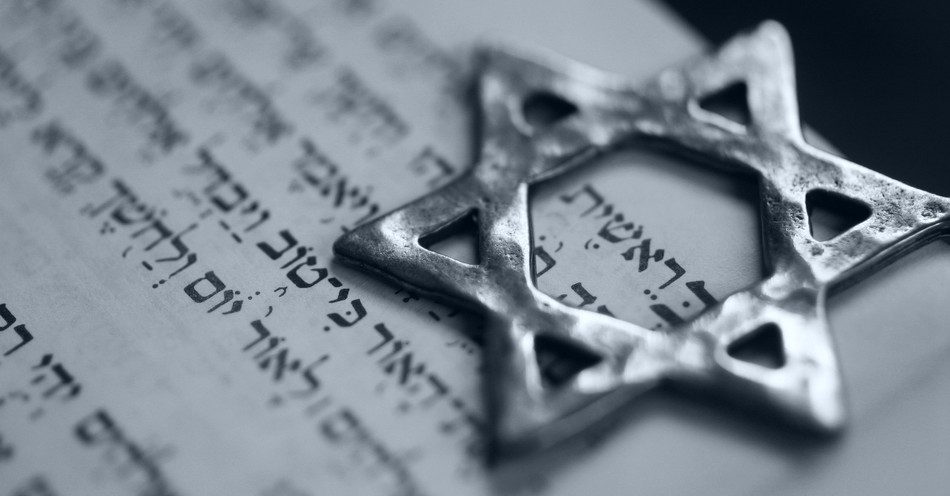The Jewish Bible, otherwise known as the Tanakh makes up what we as Christians know as the Old Testament.
Although Jewish readers have the same books in their Bible as we do in our Old Testament, they have a different way of classifying the different sections. Although we divide ours into sections such as the law, historical books, wisdom literature, etc., Jewish readers have three main categories they divide their Bible into: the law, the writings, and the prophets.
The article will also mention a few other subdivisions, addressed in the Got Questions article above.
The Law: The Torah
Same as our Old Testament, the first five books of the Bible (the Pentateuch) make up the section known as The Torah:
- Genesis
- Exodus
- Leviticus
- Numbers
- Deuteronomy
As mentioned in this article, most scholars (Christian and Jewish) typically attribute the authorship of these five books to Moses, who wrote them sometime between 1525-1406 BC.
They cover a vast expanse of time and history from the creation of the world to the death of Moses, one of Israel’s beloved leaders.
The name “Torah” means law, alluding to the fact that a good portion of the Pentateuch deals with the laws by which the Israelites abided during the time of Moses and afterward.
The Prophets: The Nevi’im
Included in this section are:
- Joshua
- Judges
- Samuel (1 and 2)
- Kings (1 and 2)
- Isaiah
- Jeremiah
- Ezekiel
- Hosea
- Joel
- Amos
- Obadiah
- Jonah
- Micah
- Nahum
- Habakkuk
- Zephaniah
- Haggai
- Zechariah
- Malachi
It may seem odd to Christian readers that some books made the cut of the “prophets” section and others didn’t. For instance, Joshua doesn’t appear to have much prophecy, but Daniel does (Daniel is included in the Writings: the Ketuvim).
We have to keep in mind that we will see differences in structure and even some of the content in the Tanakh versus the Old Testament. This article, for instance, mentions that in Christian Bibles, we have some more material for certain books such as Esther and Daniel, etc. that the Jews do not consider to be canonical.
The Writings: Ketuvim
The Ketuvim includes works of poetry, history, and wisdom. Books under this heading include:
- Psalms
- Proverbs
- Job
- Song of Solomon
- Lamentations
- Ecclesiastes
- Esther
- Daniel
- Ezra
- Nehemiah
- Chronicles (1 and 2)
The main distinctions between the Nevi’im and Ketuvim fall into where Jewish scholars determined the Nevi’im to be closed. Similar to certain groups of Christians today who believe prophecy ended after the New Testament, certain groups of Jews believed divine prophecy ended after a certain period, and any writing that didn’t fall before that date fell into the Ketuvim section.
However, we do have to keep in mind this is a highly debated subject, and Jewish scholars differ on reasonings for the different classifications of the sections.
Other Sections?
The Got Questions article linked above mentions a few other subsections.
Megillot or “The Five” refers to the books Song of Solomon, Ruth, Lamentations, Ecclesiastes, and Esther. These are the five shortest books in the Ketuvim, linked to Jewish festivals and observances.
Trei Asar or “The Twelve” refers to the 12 minor prophets, often lumped into one section in Jewish Bibles.
Although we have these subsections, the Jewish Bible typically sticks to the three main sections: Torah, Nevi’im, Ketuvim. Think of the subsections above as the way we subdivide books in the Bible into categories like minor prophets and major prophets.
Why Does This Matter?
Why should Christians care about how Jewish readers divide the Old Testament?
First, it allows us to see where we have common ground. If we read similar books, we can have a discussion with readers about what we’ve discovered in those books and open a dialogue.
Second, we can see where we differ.
Certain Jewish Bibles do not contain sections of books such as Esther and Daniel. We can be aware of those passages when we enter a discussion with someone of the Jewish faith.
©iStock/Getty Images Plus/yoglimogli
Hope Bolinger is an acquisitions editor at End Game Press, book editor for hire, and the author of almost 30 books. More than 1500 of her works have been featured in various publications. Check out her books at hopebolinger.com for clean books in most genres, great for adults and kids. Check out her editing profile at Reedsy.com to find out about hiring her for your next book project.


.jpg)
